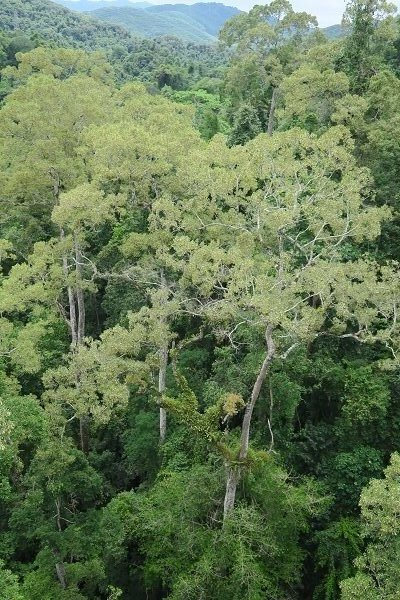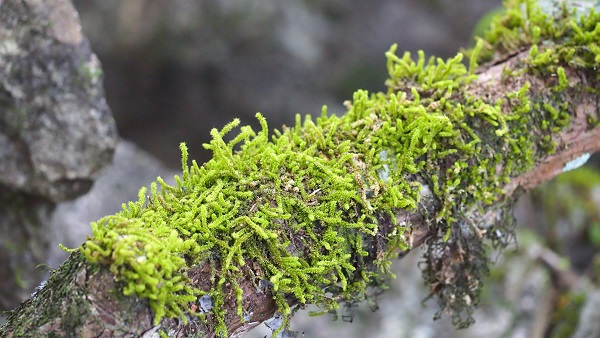Mounting evidence suggests that microclimates need to be integrated into ecological research to better understand the assembly mechanisms of forest biodiversity. Epiphytic bryophytes, which rely on rainfall for water uptake, are ideal models to address the question of how microclimatic variation within and below canopies impacts species richness, composition and phylogenetic structure, and hence, of how epiphytic communities may respond to climate change.
In a study published in Journal of Ecology, researchers from Xishuangbanna Tropical Botanical Garden (XTBG) and their collaborators attempted to take advantage of the unique facility of a tropical canopy crane to examine, at an extremely fine spatial scale, how microclimatic conditions spatiotemporally vary in a 3D space and how this fine-scale variation impacts the distribution and diversity of epiphytic bryophytes.
By employing a canopy crane giving access to 1.1 ha of tropical rainforest in Xishuangbanna, Yunnan, the researchers recorded hourly light and microclimatic conditions from 54 dataloggers for three years and epiphytic bryophyte communities from 408 plots, and modelled light and microclimatic conditions by Random Forest modelling. They implemented Generalized Dissimilarity Modelling to analyze the relationship between taxonomic and phylogenetic turnover among epiphytic communities, host-tree characteristics and microclimatic variation.
The results showed that vertical variation in light, temperature and humidity conditions are the main driver of community composition and phylogenetic structure. Epiphytic community assembly mechanisms shift from competitive interactions to phylogenetic constraints upon colonization of different micro-habitats. The low, but significant correlation between increasing phylogenetic clustering with microclimatic variation adds to emerging evidence for the role of phylogenetic niche conservatism upon community assembly, including at the small spatial scale of epiphytic communities.
“This study fills a gap in forest microclimates and revels the tight link between tropical epiphyte community composition and microclimatic variation, and the heritability of the microclimatic niche, raise, however, concerns about the ability of epiphyte communities to adapt to climate change”, said SONG Liang of XTBG.
Contact
SONG Liang Ph.D Principal Investigator
Key Laboratory of Tropical Forest Ecology, Xishuangbanna Tropical Botanical Garden, Chinese Academy of Sciences, Mengla, Yunnan 666303, China
E-mail: songliang@xtbg.ac.cn

Rich epiphytic diversity in Xishuangbanna tropical rainforest. (Image by SONG Liang)

Epiphytic bryophytes in Xishuangbanna tropical rainforest. (Image by SONG Liang)


